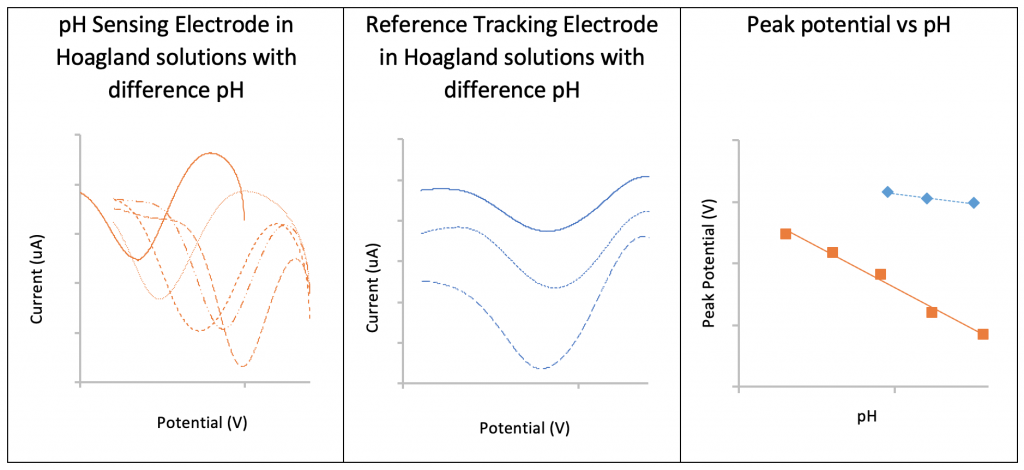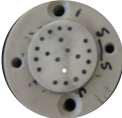pH Sensing in Hoagland Solution
ANB Sensors are developing a solid-state pH Sensor which is calibration free, operates over a wide pH range and is specifically tailored for low buffer media. The sensor operates using a standard reference electrode and a counter electrode, but with two sensing electrodes through which standard square wave voltammetry is recorded. The first sensing electrode is the pH Sensing Electrode which monitors the pH of the solution and the second electrode, the Reference Tracking Electrode tracks the reference potential of the reference electrode. Drift in the reference potential is the number one cause of recalibration in conventional pH electrode, so by tracking this drift the sensor can be recalibrated automatically in-situ. This figure shows the electrochemical signal from both electrodes along with a plot of peak potential as a function of pH. The pH sensing electrodes peak potential shifts with pH whilst the reference tracking electrode is stable with pH. The difference in these peak potentials thus provides the pH of the solution in the fully operational sensor.

pH Sensing Electrode in Hoagland solutions with difference pH Reference Tracking Electrode in Hoagland solutions with difference pH Peak potential vs pH
ANB Sensors have tested a number of prototype transducer parts in 20x diluted Hoagland solution and well-defined peak responses are observed over a number of weeks. As expected, the Reference Tracking Electrode monitored changes in the reference electrode whilst the pH Sensing Electrode measured the change in solution pH as measured against a glass electrode.

 To maximise lifetime, an electrode array is being built in which a number of addressable electrodes can be used in the sensor, and the associated control electronics for this system are also in development. The sensor array system is due to be tested on board an ROV in California in July. Upon successful completion of this phase of the project the sensor package will be miniaturised to a target size of 40 mm diameter by 200 mm length, although it should be noted that the sensor electronics and transducer can be separated for ease of packaging depending on the final application.
To maximise lifetime, an electrode array is being built in which a number of addressable electrodes can be used in the sensor, and the associated control electronics for this system are also in development. The sensor array system is due to be tested on board an ROV in California in July. Upon successful completion of this phase of the project the sensor package will be miniaturised to a target size of 40 mm diameter by 200 mm length, although it should be noted that the sensor electronics and transducer can be separated for ease of packaging depending on the final application.


